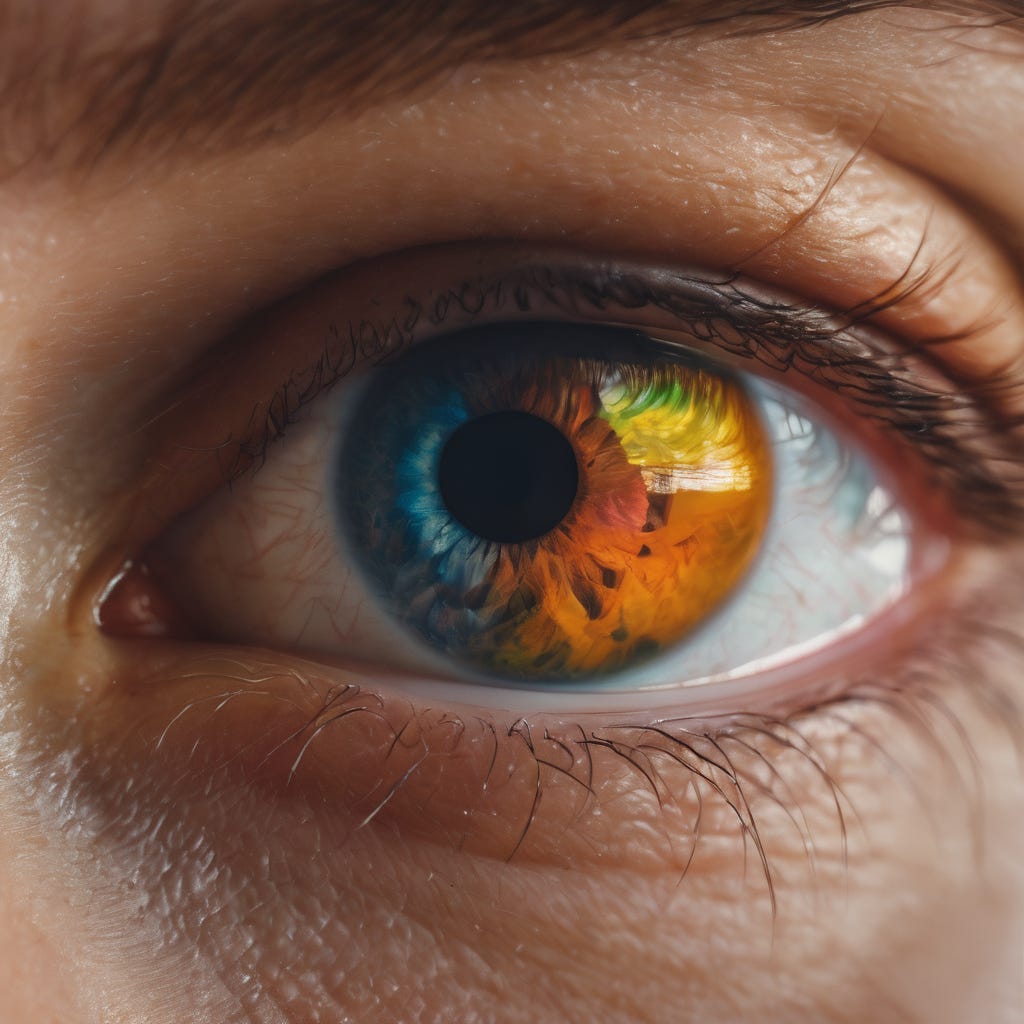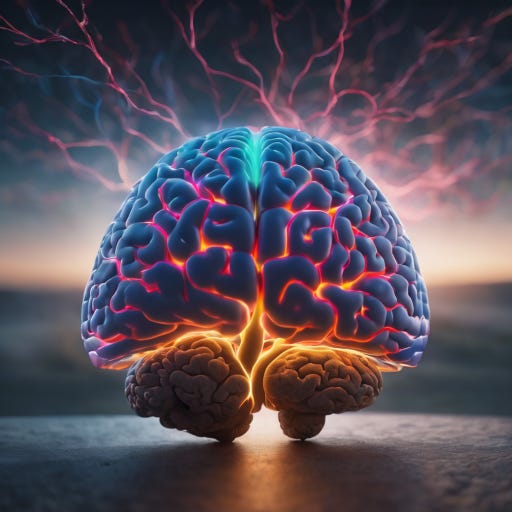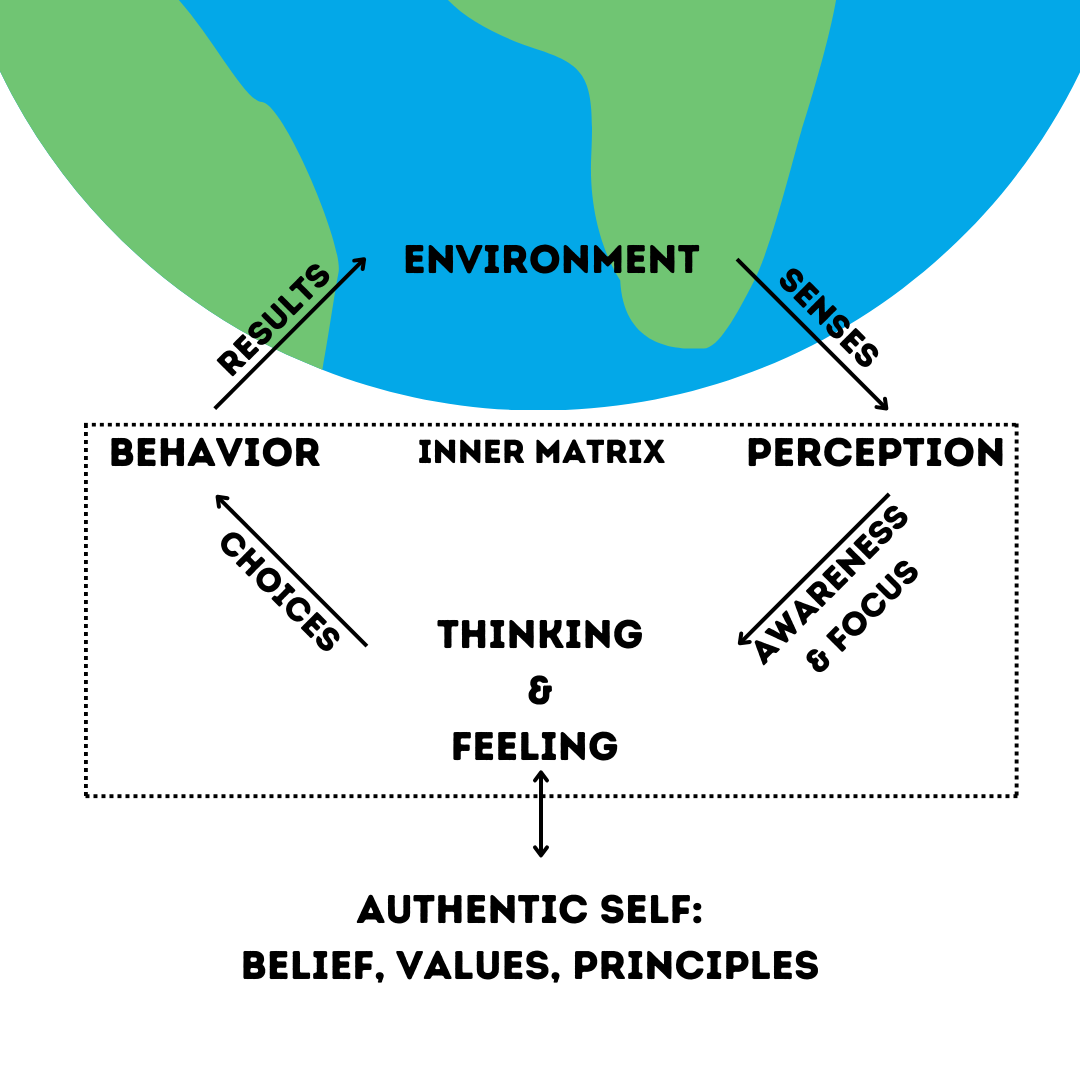Welcome to Part 2 of the “Wheel of Fate Series,” where we delve into the art of living by creating the life experience you desire, aligned with your authentic self. If you haven’t already, I encourage you to begin with Part 1: I Sought Control, and then Found Peace. This six-part series is interconnected, with links at the end of each article as they become available. Subscribe to receive updates.
In Part 1, we explored how our external world is shaped by our inner world—the Inner Matrix. We introduced the concept of inner and outer worlds and the often misguided attempt to change our outer experiences directly, rather than leveraging the more powerful and sustainable approach of working through our Inner Matrix.
The “Wheel of Fate” framework provides a practical explanation for what many refer to as Manifestation. In the series' final article, I'll discuss how to Cultivate your preferred life experience, going further than traditional manifestation techniques, to tie the series together.
This installment focuses on perception, one of the Inner Matrix's four components. We'll debunk the myth of perception as mere passive reception, revealing it as an active construction of reality influenced by thinking (Part 3) and feeling (Part 4).
You'll become a better communicator, become more mindful, and learn how to direct your thoughts and feelings more actively into productive behaviors.
Expect to explore:
The nature and impact of perception within the Inner Matrix.
Insights from the exciting field of neuroplasticity on the role of perception.
How perception actively constructs our reality.
Perception's influence on our sensitization to emotional and behavioral triggers.
The unavoidable bias perception introduces creating the "shades of our personality"—our ego.
Bonus: Practical steps for shaping a "good" ego that biases perception towards desired outcomes.
As we dive into the Inner Matrix of human experience, I invite you to momentarily set aside preconceptions. Consider this analogy: Like a fish discovering water only upon reaching the shore, we often overlook the familiar until faced with the unfamiliar. Let’s embark on this journey with open minds, ready to explore the unseen depths of our own perceptions.
Perception: The “Bouncer at the Door” of Our Inner World
Perception acts as a gateway from the outer world to our inner world.
Imagine all that surrounds us at any moment. Based on our goals, fears, and previous experiences, perception sifts through potential distractions, focusing our attention only on what it has been conditioned to highlight.
But there's more to it: perception doesn't provide filtering for our conscious awareness—it also whispers into our subconscious.
Ever seen flashing lights in your rear-view mirror?
These lights capture your attention not just because they're flashing, but also because you've been trained to respond to them in a specific way. Think of it like a snippet of “background code” running in your mind whenever you're on the road.
From a conscious awareness perspective, perception is your mind saying, “head's up” this is important.
From a sub-conscious awareness perspective, perception is like your own personal secretary, cataloguing and indexing everything else in your day that it has been conditioned to notice without engaging conscious awareness.
We might experience sub-conscious awareness as having a sudden uncomfortable feeling all of a sudden but we're not sure why. Then it hits us when we stop to ask ourselves, “what's going on?” We realize the uncomfortable feeling is the scent of someone's cologne that reminds us of an ex.
Trained by past experiences, cognitive biases, and the brain's ability to rewire itself (neuroplasticity), perception operates both in and out of our conscious control. This dual nature plays a part in serving both as a constraint and as a liberator in directing our life's course.
There may be a practical reason for perception's dual operation:
Perception aims to:
Prompt quick, life-saving decisions by identifying immediate, relevant threats. (Survivability)
Draw attention to potentially relevant information for thoughtful behaviors that enhance the quality of life over time, aiming for growth and fulfillment. (Thrive-ability)
These objectives influence the workings of our Inner Matrix and you will find is the central theme of today's read.
Next, we will delve into how we can consciously tweak our perception to better serve our needs.
Grasping the extent of our influence over perception is vital, as it guards the entrance to our Inner Matrix.
Neuroplasticity and Perception
Neuroplasticity is a fascinating area for anyone interested in mental health and personal productivity.
Something that is plastic, is plastic, because it “can be molded into shapes while soft and then set into a rigid or slightly elastic form.” -Definitions from Oxford Languages
“Neuro” relates to anything with the study of nerves, neurology. So, say it with me, now: neuroplasticity is…
the feature that describes how nerves can be molded into shapes while soft and then set into a rigid or slightly elastic form.
Good! Yes, it's true.
Contrary to past beliefs that the brain's development halts in early adulthood, neuroplasticity shows us that our brains continue to change, grow, and reorganize connections in response to new information, experiences, and environments.
You can teach "an old horse new tricks,” after all. Sorry old horses.
This adaptability of our brains to form new neural connections allows us to modify how we perceive, think, and respond to our world. However, this process is influenced by both conscious and subconscious thoughts and feelings, highlighting the interplay between perception and neuroplasticity.
What we focus on can literally change the wiring of our brain, affecting how we interpret and interact with the world around us.
But there's a catch: this self-reflexive capability means our perceptions and the resulting neuroplastic changes can form a cycle: What we think and feel affects what we percieve / What we percieve affects what we think and feel.
This dual aspect of neuroplasticity potentially reinforces negative biases or sensitivities to triggers if not otherwise guided. It can both liberate us, by enabling adaptation and growth, and constrain us, by solidifying harmful patterns.
Understanding this dynamic is crucial as it underlines the importance of directing our focus and intentions toward positive growth, setting the stage for overcoming biases and triggers through conscious effort.
The following sections will delve into these challenges and explore strategies for harnessing neuroplasticity to our advantage.
The Role of Triggers and Sensitization
In the realm of mental health sciences, sensitization refers to the process where our minds develop a heightened, often subconscious, awareness of situations deemed significant—typically those with negative connotations. This is because our brains are wired to prioritize potential threats, enhancing our survivability by making us more alert to dangers.
Sensitization involves three key elements:
Trigger: An event signaling an imminent threat.
Cognition: The mental process connecting the trigger to a survival-oriented response.
Behavior: The action taken in response to the trigger, aimed at mitigating the perceived threat.
Traumatic experiences are prime examples of how sensitization works. They program us to automatically respond to similar future threats, often bypassing conscious awareness. This mechanism is crucial for survival but can become problematic, limiting our ability to thrive when past traumas no longer represent current dangers.
Perception is central to this process, determining what is flagged as significant. Unfortunately, this often means being primed to detect negative stimuli, leading to a life shadowed by anxiety and perceived threats that may disproportionately focus on survivability at the cost of thrive-ability.
For an interesting read on anxiety specifically, bookmark this for later:
We carry these sensitizations with us, forming coping mechanisms to manage the fallout. However, these mechanisms can become hindrances, especially when they involve unhealthy behaviors like substance abuse or avoidance strategies.
The good news is that our perceptions are malleable. By consciously shifting our focus towards the positive, we can recalibrate our sensitizations from being overly survival-focused to fostering growth and fulfillment.
The subsequent sections will explore how we can leverage neuroplasticity to rewire our responses to triggers, transforming them from obstacles to opportunities for personal development.
Biasing the Mind
Much like the trauma model described above, our behaviors, thoughts, and feelings often follow a trigger-cognition-behavior pattern, not just in response to trauma but in our everyday interactions.
For example, a political statement might trigger an emotional response leading to action, whether it's shouting at the TV or volunteering. Similarly, the scent of a favorite food can drive us to seek it out.
Triggers shape much of our automatic behavior throughout the day, beneficial for practiced skills or crafts where intuitive responses to multiple inputs are necessary. However, this system can also lead to undesirable behaviors if we're unaware of our triggers. Building awareness through self-reflection often initiates a chain of changes that can alter these patterns.
A significant barrier to change are the "shades of personality" or strong ego attachments that dictate responses to specific triggers, intertwining our identity with certain behaviors. Changing these patterns is challenging without addressing the underlying ego, as it often masks the trigger-cognition-behavior complex, making identity change seem daunting.
A biased mind may even foster delusional thinking, where perspective skews perception, ignoring evidence that contradicts our beliefs. Such delusions, often ego-protected coping mechanisms, persist until a crisis forces a reevaluation and realignment of our identity.
Fortunately, the process can be positively directed. By biasing our minds towards positive perceptions, we can foster behaviors that lead to tangible improvements in our lives. Techniques from positive psychology and cognitive-behavioral therapy, for instance, aim to reshape our thought and feeling patterns. Through neuroplasticity, these practices recalibrate our mental filters, altering our perceptions and responses.
Implementing strategies like mindfulness or cognitive restructuring can guide this process, offering a pathway from awareness to action. These approaches not only help in recognizing and modifying triggers but also in developing a more resilient and adaptable mindset, fostering a life that leans more towards thriving than merely surviving.
To sum we can think about the “glass half-full or half-empty” adage:
Deciding whether a glass is half-empty or half-full is a matter of perspective.
Your reaction to the glass is a matter of perception.
Choose a perspective over and over again and it will bend your perception to see it that way.
Practical Steps for Biasing Perception Towards the Positive
Modifying perception requires a nuanced approach, as it operates on multiple levels of the human experience. From addressing specific behaviors to transformative changes in identity, here’s how you can engage with your perceptions at various depths:
Surface Level: Start by addressing discrete perceptions that lead to certain behaviors through cognitive reframing. This involves becoming aware of the perception, its trigger, and the resultant behavior, then questioning the subconscious processing behind this sequence. It’s a mindfulness practice that emphasizes responding thoughtfully rather than reacting impulsively.
An interesting read that ties into this concept of questioning the subconscious can be found below:
Deeper Level: Dive into the thoughts and feelings that underpin these perceptions. This approach doesn't target specific perceptions but aims to shift your general mindset, encouraging a perspective of abundance over scarcity.
Transformative Level: Address the core of your identity—your beliefs, values, and worldview. This most profound level of change often follows significant life events but can also be nurtured through deliberate practice and reflection.
Strategies like gratitude and meditation not only work on the level of perception itself but foster a holistic change in how we interpret the world. Meditation teaches us to direct our thoughts intentionally, making it easier to identify and alter negative patterns before they solidify. Gratitude practices, such as nightly reflections on positive experiences, directly train our perception to recognize and celebrate the good in our lives.
By choosing to work within one or all these levels, you can gradually reshape your perception, moving from a reactive stance to a more resilient and proactive outlook on life. This multi-level approach not only enhances our capacity to deal with challenges but fundamentally alters our engagement with the world for the better.
Integrating Perception with the Inner Matrix
If you're joining us from Part 1: I Sought Control, and then Found Peace, you're already familiar with the pivotal role of perception within the Inner Matrix in shaping our external realities. Instead of attempting to alter the outer world directly—a path often fraught with control issues—we've seen how refining our inner world can lead to more effective and imaginative outcomes.
As the gateway between the external and internal realms, perception is crucial not only in this part but as we delve into the Inner Matrix's other elements: thinking, feeling, and behavior. It's the cornerstone upon which all subsequent transformations are built, influencing how we subjectively experience the world. More intriguingly, as we will demonstrate, these subjective changes have the power to manifest objective alterations in our environment, reshaping what we objectively perceive.
In the upcoming parts of this series, we will explore how adjustments in our perception can catalyze profound changes in our thoughts, emotions, and actions, ultimately leading to a redefined interaction with the world. By understanding and harnessing the dynamics of our Inner Matrix, we unlock the potential to not just perceive but to actively create our reality.
Stay tuned as we continue this journey, inviting you to reflect on how perception has shaped your experiences so far and how, by consciously engaging with our Inner Matrix, we might transform our world from the inside out. What changes might you start to notice in your daily life as you shift your perception?
Future Articles in the Series
Look out for these future articles in the series. Be sure to subscribe so you are notified when their posted!
Thinking: The power of thoughts in shaping our emotions and behaviors.
Feeling: Understanding how feelings shape thoughts and hint at deeper values and beliefs.
Behavior: How changing our actions can transform our environment and ourselves.
The Wheel of Fate: Embracing destiny through Authenticity.
Return to Previous Article in the Series
Environment: Shifting from Controlling the Environment to Mastering the Inner Matrix











